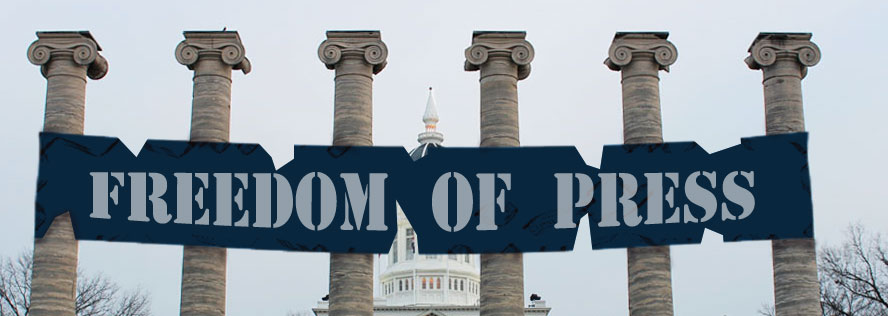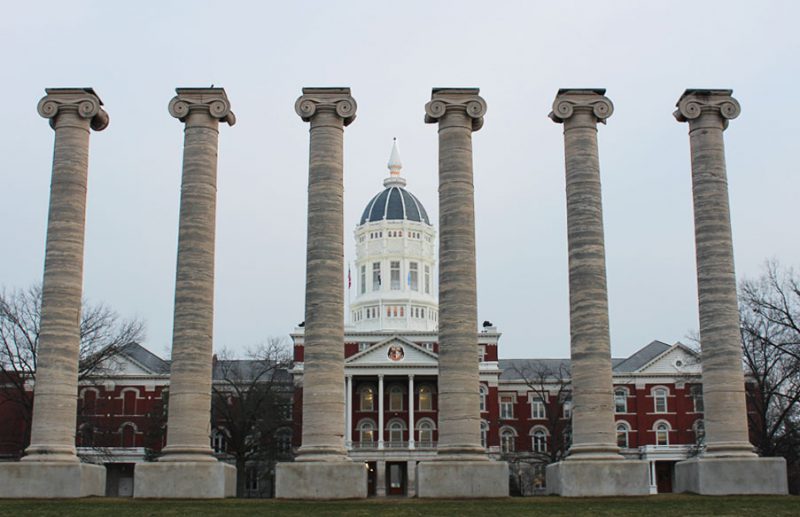These past few days have been a time of reflection. As a high school student living in Columbia, Missouri whose parents both work on the University of Missouri-Columbia campus, I have a personal connection to the events that ignited national media and divided my community.
I drive past Carnahan Quad at least once a week to pick up my mother from work. Imagine my surprise when that quad gained national recognition on Monday, when video emerged of Columbia Missourian photojournalist Tim Tai being confronted by protesters.
Countless journalists have tweeted their horror at the footage, which shows people verbally attacking and shoving Tai as he attempted to photograph the protestors’ self-designated no-media “safe space”.
As a student journalist, I felt a kinship with Tai, who was simply trying to do his job. There have certainly been times when I have felt uncomfortable and unwelcome when reporting on difficult issues for my school paper. Tai’s perseverance in continuing to take photos, even with protesters yelling at him and trying to seize his camera, is admirable.
With this in mind, the journalism community’s reaction to the video has left me conflicted. I agree that the protesters’ physical actions against Tai, particularly Mass Communications professor Melissa Click’s request for ‘muscle’ to forcibly remove Tai, are inexcusable. However, the resulting conversation is incomplete. What is missing from the dialogue is an examination of why the protesters felt the need for a media-free space.
Media bias in covering minority groups is a long-documented phenomenon. According to a 2000 paper published in The Journal of Communication, in a sample of Los Angeles and Orange County, California news broadcasts, “African-Americans were overrepresented as perpetrators, and Latinos and whites were underrepresented as perpetrators.”
One reporter who tackled this issue in the aftermath of the Tai video is Wesley Lowery, a reporter with the Washington Post. On Nov. 9, Lowery tweeted an anecdote about an instance where he needed to cover a police shooting in Boston. Friends of the victim, some of whom were gang members, asked for no cameras. Lowery respected their wishes. However, a television crew soon showed up and entered into an argument with the victim’s upset friends about first amendment protections for the press. The crew was technically within their rights, Lowery wrote, but the interaction failed to produce any useful or informative journalism.
I believe in the lesson Lowery is trying to share. In fact, I learned this lesson firsthand just a few months before.
This past summer, I attended JCamp, a summer journalism program sponsored by the Asian American Journalists Association. As part of my reporting duties, I chose to cover the Minneapolis neighborhood of Cedar-Riverside, the home of a very large Somali population.
Before heading down to Cedar-Riverside, my mentors warned me that there was a deep distrust of the media among many Somali-Americans; they believed their community was often misrepresented in the news as rife with terrorists and violent individuals.
Having been cautioned in advance, I approached Cedar-Riverside with some apprehension. Just as I expected, my voice recorder and notebook failed to attract enthusiastic interviewees — far from it. Countless residents turned down my request to ask them a few questions. Some declined with polite excuses and others with blunt refusals; I just smiled and moved along in search of sources.
I eventually sat down on a park bench, next to a woman and her two children. After identifying myself as a student journalist, I asked her if she would be willing to participate in an interview. After some hesitation, she agreed. This woman told me the beautiful, heartbreaking story that was her life, and I felt ecstatic at the chance to share her words.
Then, she changed her mind.
The woman asked to retract her interview, citing fears that her family would disapprove. Though I had no guarantee that I could find another source, and though she did not technically have the right to recede what she told me, I agreed to her request. I wanted to treat her more as another human being than as just another story. My decision actually aided me in the long run, as the woman directed me to a local activist who gave me more than enough information for my article.
I am not maligning Tai for debating first amendment protections with the protesters trying to keep him out. I have always, and will always, remain a fierce protector of freedom of the press. However, the work I do as a student journalist has taught me to look at all sides of the story.
I can condemn violations of media rights while also maintaining that journalists should engage in self-reflection about how to cover communities they don’t belong to. I am not exempt from this needed discussion. How do we balance a responsibility to respect the wishes of marginalized communities with our duties as reporters? Do we have that responsibility at all?
I do not have an answer for this question, nor can I provide a solution for the multitude of problems that exist between the media and certain minority groups. Nevertheless, I can ask that we start talking about these issues, uncomfortable as they may be. As journalists, we always seek to cover the conversation happening around us. Maybe this time we need to start it ourselves.
Controversy over ‘Melissa Click’ video misses key issues
November 13, 2015























































































Name (Required) • Nov 21, 2015 at 9:43 pm
What do you mean by “communities they don’t belong to”? Why can’t a journalist be at a “safe space”? Are you suggesting that “safe spaces” are only designated for certain people?
Let’s not minimize the fact that Melissa Click committed assault and battery on a reporter. Not only is this happening at a college campus, but a campus that is one of the top journalism schools in the nation. What doesn’t Click and Concerned Student 1950 want reporters and the world to see? Maybe it has something to do with the fact that she’s a communications professor with a liberal agenda.